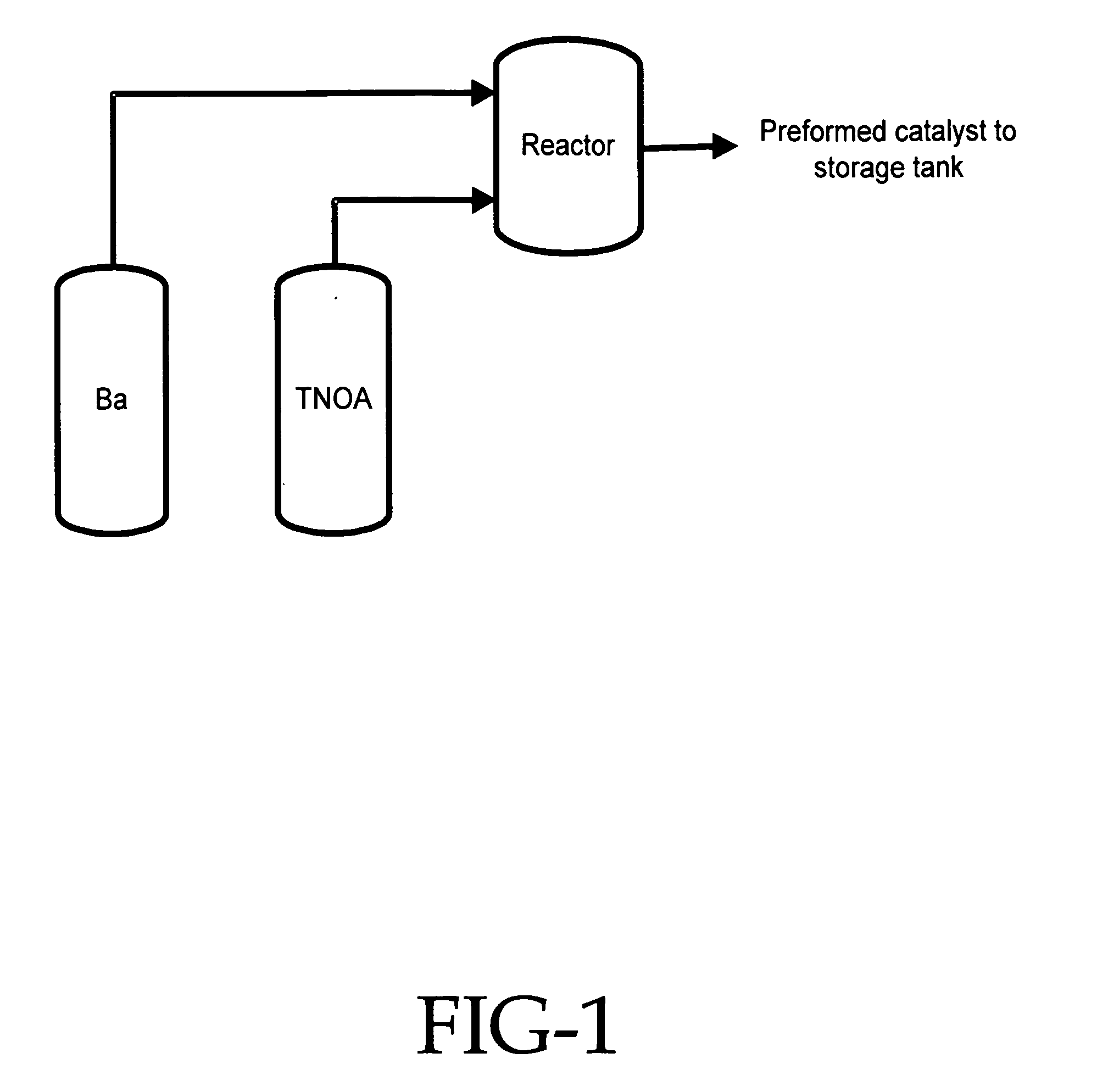Catalyst for synthesizing high trans polymers
a polymer and catalyst technology, applied in physical/chemical process catalysts, organic compound/hydride/coordination complex catalysts, chemical/physical processes, etc., can solve the problems of difficult to achieve molecular weight control, difficult to achieve monomer conversion, and low polymerization efficiency, so as to increase the level of styrene conversion and moderate the polymerization temperature
- Summary
- Abstract
- Description
- Claims
- Application Information
AI Technical Summary
Benefits of technology
Problems solved by technology
Method used
Image
Examples
example 1
[0051] In this experiment a three neck flask equipped with a thermometer, water condenser with a Dean Stark water trap, and a nitrogen inlet was charged with 3 liters of anhydrous ethyl benzene. Then, 1 mole of barium hydroxide mono hydrate was added to the flask with constant stirring. To this heterogeneous solution was added 2 moles of one of the following alcohols: (a) di(ethylene glycol) ethyl ether, (b) di(N,N-dimethyl / amino ethylene glycol) ethyl ether, or (c) di(ethylene glycol) hexyl ether. The ethyl benzene solvent was brought to reflux temperature at which it was maintained until 2 moles of water were removed. The resulting barium salt of the organic compound was soluble in the ethyl benzene and the resulting homogenous solution was used in each of the following examples.
example 2
[0052] In this experiment a styrene-butadiene rubber having a high trans-microstructure content was synthesized utilizing the catalyst system of this invention. In the procedure used, a 500 gallon (1893 liter) reactor was charged with 1900 pounds (862 kg) of monomer premix solution containing 1,3-butadiene and styrene in hexane. The monomer premix solution contained 65% 1,3-butadiene and 35% styrene monomer. The monomer premix solution charged into the reactor a small amount of moisture (0.5 ppm of water). The reactor was heated to 170° F. (77° C.) and the catalyst was charged into the reactor at 0.35 mmoles per 100 grams of monomer. The catalyst was made beforehand with barium di(ethylene glycol) ethyl ether that has been alkylated with trioctyl aluminum and mixed with n-butyllithium. The temperature of the reactor climbed steadily to 245° F. (118° C.) and the cooling bypass was opened completely to control the reactor temperature. After three hours of reaction time the reactor was...
example 3
[0053] In this experiment the same procedure was followed as in Example 2 except that the moisture content of the premix was 25 ppm of water. The catalyst charge was the same as in the above example. The temperature of the reactor was raised to 170° F. (77° C.) and all the catalyst was added. The reactor temperature reached 224° F. (107° C.) and was held constant through the reaction without any temperature surge as observed in Example 2 where the moisture content was 0.5 ppm. The presence of 25 ppm of water moderated the reaction temperature and increased the level of styrene conversion. The styrene conversion increased from 27% to 31% suggesting that the overall conversion increased from 77% to 88%.
PUM
| Property | Measurement | Unit |
|---|---|---|
| Temperature | aaaaa | aaaaa |
| Temperature | aaaaa | aaaaa |
| Temperature | aaaaa | aaaaa |
Abstract
Description
Claims
Application Information
 Login to View More
Login to View More - R&D
- Intellectual Property
- Life Sciences
- Materials
- Tech Scout
- Unparalleled Data Quality
- Higher Quality Content
- 60% Fewer Hallucinations
Browse by: Latest US Patents, China's latest patents, Technical Efficacy Thesaurus, Application Domain, Technology Topic, Popular Technical Reports.
© 2025 PatSnap. All rights reserved.Legal|Privacy policy|Modern Slavery Act Transparency Statement|Sitemap|About US| Contact US: help@patsnap.com


